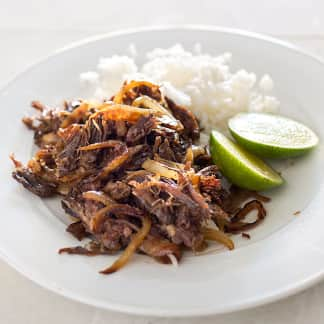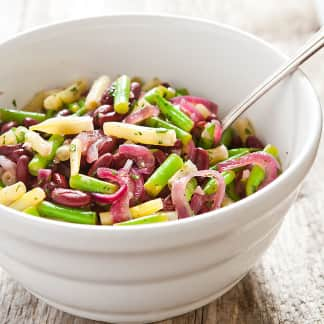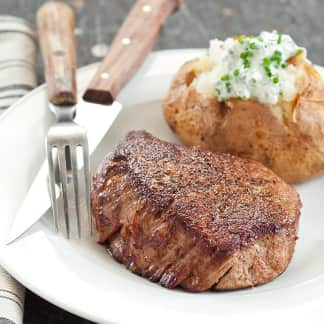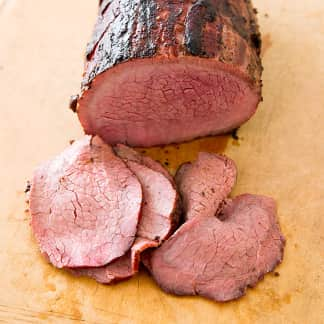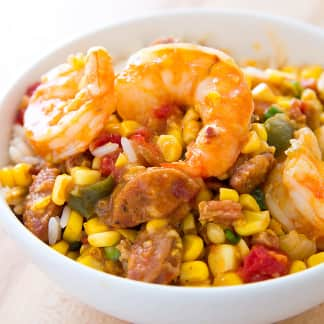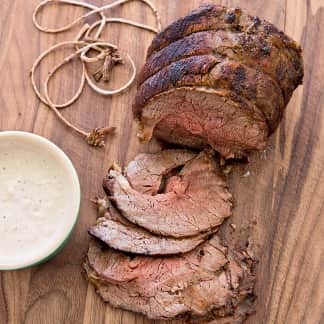Reviews You Can Trust.
See Why.
All-Purpose Vegetable Oils
Vegetable oil should stay behind the scenes, whether you’re baking, sautéing, or making salad dressing. But pick the wrong oil, and your food could taste like old fish.
Editor&aposs Note:UpdateApril 2015
Top Pick

WinnerCrisco Blends
Sign up for the Well-Equipped Cook newsletter
Shop smarter with our ATK Reviews team's expert guides and recommendations.
What You Need to Know
Cooking oil is one of the oldest culinary ingredients. Since ancient times, people have made oil from olives, palms, and rapeseed. But many familiar oils in this country came along much more recently. While peanuts are native to the New World, it took the Old World to turn them into cooking oil after explorers brought them back to Europe. (Only a trickle of peanut oil was made in America until World War I, when the military needed it to make glycerin for explosives.) Corn oil is another modern invention: In 1910, a chemist discovered a way to refine it for cooking, and Mazola corn oil was launched the next year. Cottonseed oil was hugely popular in the early 20th century—Crisco, invented in 1911, stands for “crystallized cottonseed oil”—but World War II shortages let soybean oil take the lead. It remained the most widely used oil in postwar America until the mid-1980s, when canola oil hit U.S. supermarkets—with a boost from Canadian oil producers, who cleverly trademarked a more appealing name for rapeseed oil (based on the words “Canada Oil, Low Acid”).
Today, the average grocery store stocks more than a dozen vegetable oils, from canola to corn to soybean, and blends of one or more oils. Add a profusion of vague names like “Vegetable Plus!” and “Natural Blend,” and suddenly vegetable oil can be downright confusing. Are there any real differences in performance that will matter to the home cook?
Why Vegetable Oil is One-Size-Fits-All
Vegetable oil is a workhorse of the kitchen partly because of its neutral taste: Fat conveys flavor, and with no strong taste of its own, vegetable oil highlights other ingredients. That unobtrusive flavor profile makes it ideal not only for frying and sautéing, but also for baked goods—our Fluffy Yellow Layer Cake (March/April 2008), for example—that need more moisture than butter alone can offer, and salad dressings where the stronger presence of olive oil is not preferred. Ideally, so as not to clog our pantry with redundant items, we’d find a one-size-fits-all oil—one that could function seamlessly in everything from rich, creamy mayonnaise or vinaigrette to moist, sweet cake and crisp, golden fried food.
The Importance of Smoke Point
For the last of these tasks, refined vegetable oils have a built-in advantage: a generally high smoke point, the temperature at which wisps of smoke appear, signaling that the oil is breaking down. Cooking in oil past its smoke point gives food an off-flavor. Smoke points are not absolutes; older and less refined oils have lower smoke points, and there is some variation according to the type of oil. Our lineup averaged about 450 degrees: fine for everyday shallow-frying, sautéing, and stir-frying—even deep-frying, for which the oil should stay between 350 and 375 degrees. Peanut oil, the test kitchen’s favorite for deep-frying because of its even higher smoke point (between 450 and 475 degrees) and good flavor, was excluded from this testing because it’s much more expensive (roughly twice the price of most vegetable oils) and not as widely available. We also excluded olive oil; with the exception of extra-refined versions, its smoke point is lower than refined vegetable oils, and it’s more costly.
Are Vegetable Oils as "Flavorless" as They Seem?
Vegetable oil in the United States is dominated by three huge brands—Crisco, Mazola, and Wesson—which together account for about half of the more-than $1 billion category of “cooking and salad oils” sold in supermarkets every year (the remainder is made up of dozens of store brands and smaller name brands). Because an everyday cooking oil should be easy to find, we focused on these widely available brands. From each company we grabbed bottles of canola, corn, “vegetable” (the industry’s term for soybean oil), and blends of these, ultimately ruling out harder-to-find varieties like grapeseed, cottonseed, safflower, and sunflower.
The industry calls these mass-market products “RBD” oils: refined, bleached, and deodorized. Hexane, a chemical solvent, is used to strip the maximum amount of oil from the seeds or grains; then the oil is filtered to remove impurities that would lower the smoke point, bleached to a light color, and deodorized to leave it nearly scent-free.
Since our goal was to find oils that left no footprint, we needed applications where any off-flavors would stand out. This ruled out stir-fries, where the strong flavors of the other ingredients would surely overtake any other taste. Homemade mayonnaise—made of oil and not much else—seemed a good bet. Checking that all the oils were well within the expiration dates, we opened a fresh bottle of each and set to work whisking together 10 batches of mayo.
Homemade Mayonnaise Exposes Off-Flavors
Right off the bat, this test debunked any notions that these oils were flavorless. Some of them—the corn oils—not only had a distinct taste but one that tasters strongly objected to. Faces scrunched up in disgust, tasters scribbled down comments like “pungent,” “sour,” or “off-flavors like feet, or maybe gym socks” for three out of four mayos made with corn oil. Meanwhile, although most of the other oils were simply “inoffensive” in the mayo, a few of the canola and canola blends were praised for their “light” and “clean” taste in this application.
Is Something Fishy in These French Fries?
Next came french fries. Like mayonnaise, bland potatoes would offer a neutral backdrop. Turning the test kitchen into a veritable fry shack, we poured 2½ cups of each oil into skillets, got the oil good and hot, and fried equal amounts of frozen fries for five minutes (opting for the prefab fries, since they’re designed to be the same from bag to bag). Once again, this test demonstrated that in recipes with few ingredients, these ostensibly blank-slate oils do exhibit differences. Again the corn oils stood out—but in a near-reversal of their performance with mayonnaise, they literally fried the competition, in some cases by a significant margin. They seemed to enhance the fries’ potato flavor and yielded crisp, sweet spuds with little to no oily aftertaste. A few of the canola oils (and the one pure soybean oil) also distinguished themselves—but negatively, a few tasters noting “fishy” and metallic flavors, respectively.
Heat Transforms Oil Flavor Compounds
A little oil-heating science: As oil is heated, chemical changes take place, and new flavor compounds are created that literally change its taste—sometimes for the better, sometimes not.
Corn oil, made from the germ of the kernel, includes sulfur- and nitrogen-containing flavor compounds that end up in trace amounts in the oil, creating a mild corn flavor when it’s at room temperature, as in mayonnaise. But heat it up and some of these compounds change, giving foods fried in corn oil a different flavor than uncooked corn oil. These prized flavors don’t exist in cold corn oil, or in soybean or canola, which helps explain why we particularly enjoyed the potatoes fried in corn oil—and why we disliked the oil’s taste in mayonnaise.
Oddly enough, heat has the opposite effect on other oils. When subjected to high temperatures, the unsaturated fatty acids in canola oil break down and take on a subtle fishy taste; in soybean oils the effect is a slightly metallic cast. That said, while some tasters picked up on these off-flavors, these negatives did not markedly affect the oils’ overall rankings.
Sampling Vegetable Oils as a Supporting Role
We now knew how the oils performed in applications where their flavors had the potential for standing out. That left us with two more tests, both of which would demonstrate how the oils performed in more subordinate roles. Singling out our top- and bottom-ranked oils from the previous tests, we whipped up white layer cakes and basic vinaigrettes. But here, most tasters couldn’t detect any differences whatsoever. All that sugar and vinegar, respectively, masked the oils’ flavors beyond recognition.
Seek Out Sunflower Oil Blends
When it came to picking a winner, we failed to find one all-purpose oil that outdistanced all the others. Our top-ranking oil (though not by much) was a mix of canola and soybean oils with an unusual addition: sunflower oil. It ranked second in our french fry test and first in mayonnaise, and is the only oil in the lineup to include sunflower oil. It turns out that blending canola, soybean, and sunflower provides checks and balances that keep the oil fresher and more flavorful, even under high heat. Sunflower oil, the lowest of the three oils in polyunsaturated acids, resists oxidation well, giving it better shelf and frying stability.
For Most Recipes, Oil Type Doesn't Really Matter
So what’s the bottom line? When buying vegetable oil, there are a few caveats: Mayonnaise makers, take heed of corn oils; they’re likely to stand out unfavorably on your next turkey sandwich. And if you do a lot of frying and are particularly sensitive to the occasional fishy flavors in canola oil, you might want to choose another kind. But for most of us in the vast majority of applications (particularly when lots of ingredients or bold flavors are in the mix), it doesn’t really matter which type of oil we buy.
America's Test KitchenWatch Now
Everything We Tested
Recommended

WinnerCrisco Blends

Mazola Canola Oil

Crisco Pure Vegetable Oil (soybean)

Crisco Corn Oil

Crisco Canola Oil

Wesson Vegetable Oil (soybean)
Recommended with reservations

Wesson Canola Oil

Mazola Corn Oil

Mazola Corn Plus! Oil (corn and canola)

Wesson Corn Oil
*All products reviewed by America’s Test Kitchen are independently chosen, researched, and reviewed by our editors. We buy products for testing at retail locations and do not accept unsolicited samples for testing. We list suggested sources for recommended products as a convenience to our readers but do not endorse specific retailers. When you choose to purchase our editorial recommendations from the links we provide, we may earn an affiliate commission. Prices are subject to change.
Reviews You Can Trust
The mission of America’s Test Kitchen Reviews is to find the best equipment and ingredients for the home cook through rigorous, hands-on testing. Have a question or suggestion? Send us an email at atkreviews@americastestkitchen.com. We appreciate your feedback!
The Expert

byLisa McManus
Executive Editor, ATK Reviews
Lisa is an executive editor for ATK Reviews, cohost of Gear Heads on YouTube, and gadget expert on TV's America's Test Kitchen.
Lisa McManus is an executive editor for ATK Reviews, cohost of Gear Heads on YouTube, host of Cook's Illustrated's Equipment Review videos, and a cast member—the gadget expert—on TV's America's Test Kitchen. A passionate home cook, sometime waitress, and longtime journalist, she graduated from Columbia University's Graduate School of Journalism and worked at magazines and newspapers in New York and California before returning like a homing pigeon to New England. In 2006 she got her dream job at ATK reviewing kitchen equipment and ingredients and has been pretty thrilled about it ever since. Her favorite thing is to go somewhere new and find something good to eat.
Reviews You Can Trust.
See Why.


